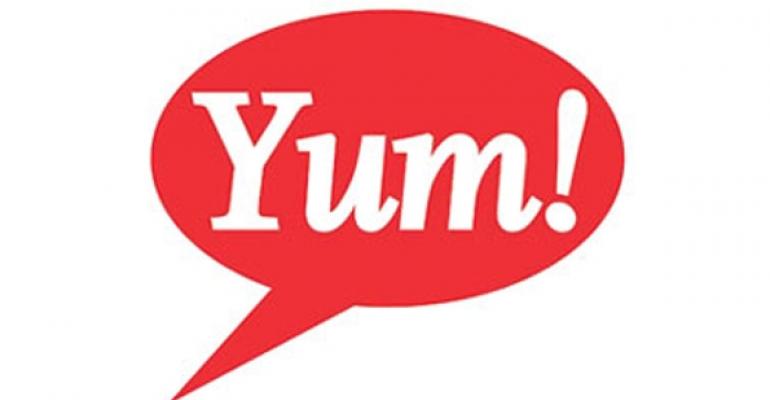Same-store sales for Yum! Brands Inc.’s China division worsened in July to a 13-percent decline, including a 16-percent decrease at KFC and a 3-percent gain at Pizza Hut Casual Dining.
Both results deteriorated sequentially from same-store sales figures in June, when a 10-percent overall decline for China made Yum’s projections for a return to same-store sales growth in the country by the fourth quarter of 2013 appear solid. Same-store sales had grown 6 percent at Pizza Hut in June, and KFC’s decrease had narrowed to a 13-percent decline, which was KFC’s best result since April.
RELATED
• Yum 2Q profit falls 15%
• KFC drags down Yum China's May same-store sales
• Same-store sales at NRN.com
In a filing with the Securities and Exchange Commission, Yum wrote that “KFC sales were negatively impacted by the residual effects of adverse publicity surrounding the December poultry supply incident,” in which a report on Chinese state television said that many of the country’s chicken suppliers used growth hormones in their flocks.
KFC China rolled out a public-information marketing campaign earlier this year to allay consumer fears of tainted chicken, and sales slowly began improving before an outbreak of avian flu in April reignited customers concerns about food safety.
In late June, Chinese state television broadcast another report questioning food safety, alleging that a KFC location in Beijing served ice that contained 12 times the bacteria levels found in toilet water. Yum did not acknowledge this report as a cause for further same-store sales disruption in its filing with the SEC.
Securities analysts covering Yum did not factor the last incident with Chinese state television into their latest research notes on the company, either. However, several of them wrote that the July misstep in Yum China’s road to recovery throws the company’s target of positive same-store sales by the fourth quarter into doubt.
“Yum reiterated expectations for China comps to turn positive in the fourth quarter, with a view that planned initiatives can help to spur better trends in upcoming months,” wrote David Tarantino of Robert W. Baird & Co. “We think visibility to this outcome has become somewhat lower following the deceleration in July and the recent series of softer economic data for China.”
Andy Barish of Jefferies Equity Research added in a separate note that the sequential slowdown in July affirms greater risk to Yum’s recovery from increased competition in China, not just fallout from avian flu and the December 2012 poultry supply report.
“With the threat of avian flu diminishing, we had expected comps to continue a positive trajectory,” Barish wrote. “The company attributed the weakness to the negative publicity around December’s poultry supply scare, but given its prolonged impact despite a heavy post-Chinese New Year quality campaign, we worry that the miss confirms a tougher competitive environment and more cautious consumer spending.”
A full recovery in same-store sales likely will take longer than originally thought in China, Barish noted, even as KFC continues to roll out initiatives around value and new dayparts.
“We think rising competitive pressures from local and overseas concepts and the country’s normalizing growth rate are going to drive unpredictable top-line trends in the foreseeable future, despite the long-term opportunities provided by a growing consumer class and first-mover advantage in emerging cities,” he wrote. “The company is also rolling off more than 2 percent of price taken in last year’s third quarter, with no immediate plans to replace it as it struggles to turn traffic, which was down 17 percent in the first half.”
Yum’s stock opened at $72.36 per share in Tuesday morning trading, falling 2.8 percent from Monday’s close of $74.47 per share.
Louisville, Ky.-based Yum has more than 5,400 restaurants in China. It operates or franchises more than 39,000 locations of KFC, Pizza Hut and Taco Bell in more than 130 countries.
Contact Mark Brandau at [email protected].
Follow him on Twitter: @Mark_from_NRN





